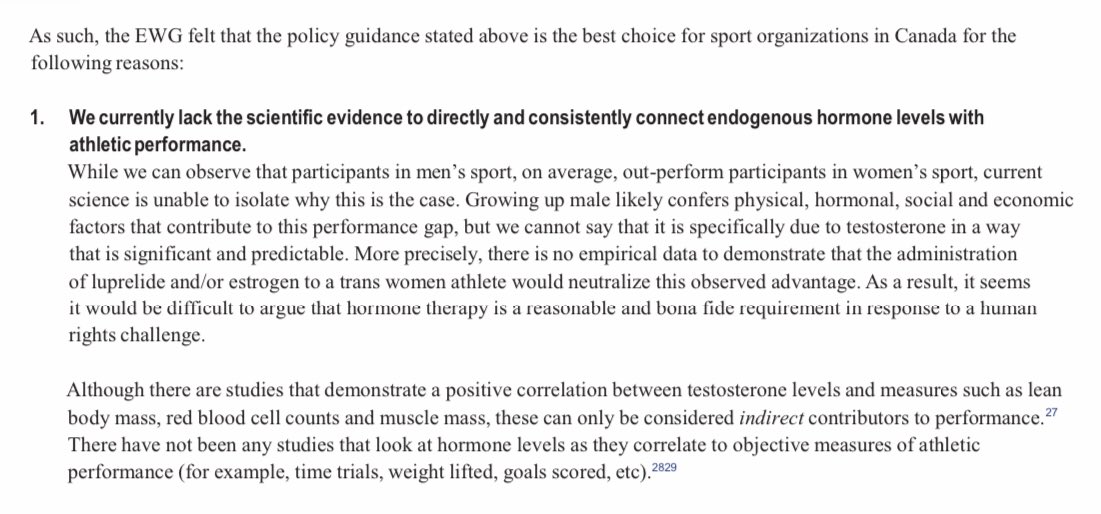
‘Without a sex-based category for female athletes, women are quite simply excluded from the top levels of sport.’
Great article here from @BarbaraRKay nationalpost.com/opinion/barbar…
Great article here from @BarbaraRKay nationalpost.com/opinion/barbar…
‘First they justified trans women competing with women because they had “always” felt they were female. Then they say the “always” female trans athlete might “be” male for certain sports or at different times.’
@EthicsInSPORT
@EthicsInSPORT
From the working group document:
‘Growing up male likely confers physical, hormonal, social and economic factors that contribute to this performance gap, but we cannot say that it is specifically due to testosterone in a way
that is significant and predictable.’
‘Growing up male likely confers physical, hormonal, social and economic factors that contribute to this performance gap, but we cannot say that it is specifically due to testosterone in a way
that is significant and predictable.’

That whole paragraph is remarkable.
‘We don’t know why males are better at sports. But they are. Probably not testosterone though. And T suppression won’t remove that advantage anyway. So they shouldn’t have to reduce T to compete in the female category.
Sorry, women.’
‘We don’t know why males are better at sports. But they are. Probably not testosterone though. And T suppression won’t remove that advantage anyway. So they shouldn’t have to reduce T to compete in the female category.
Sorry, women.’
I think perhaps one of the most infuriating absences in this debate is the complete lack of acknowledgment that female sports categories are *themselves an inclusion measure* for females.
All this analysis of prioritising inclusivity and offering opportunities to disadvantaged people never seems to be applied to the people for whom the category exists.
It’s like they’ve forgotten.
It’s like they’ve forgotten.
• • •
Missing some Tweet in this thread? You can try to
force a refresh





